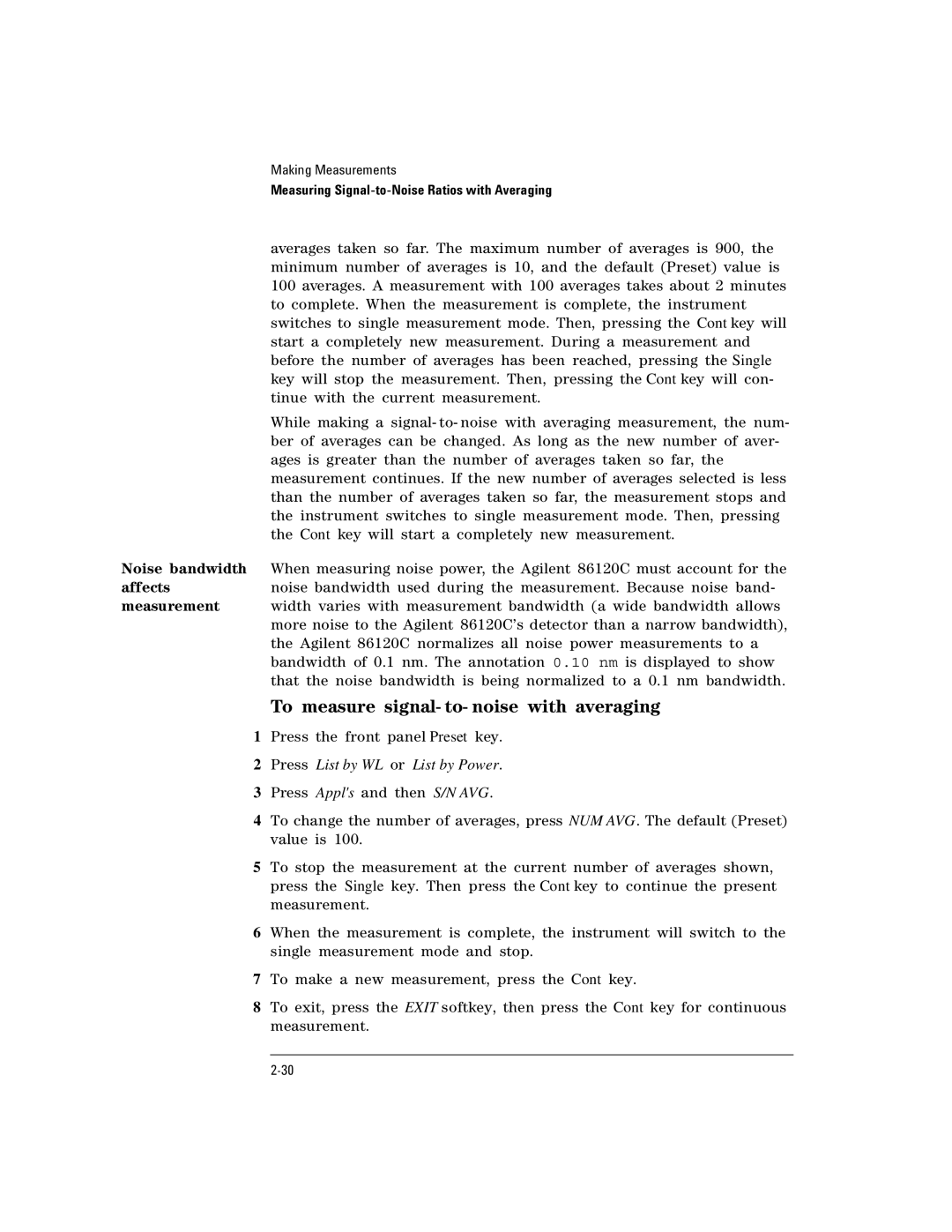Agilent 86120C specifications
Agilent Technologies is renowned for its innovative solutions in the field of electronic measurement and test instrumentation. Among its extensive portfolio, the Agilent 86120C stands out as a high-performance optical sampling oscilloscope designed for advanced optical communication system testing and development.One of the key features of the Agilent 86120C is its ability to perform high-speed digital modulation analysis. With a bandwidth of up to 20 GHz, it supports a wide range of optical signals, making it ideal for testing and characterizing various optical components and systems. The device is capable of analyzing multiple modulation formats, including pulse amplitude modulation (PAM-4), making it a critical tool for engineers working on next-generation data transport technologies.
Another outstanding characteristic of the Agilent 86120C is its sophisticated optical performance monitoring capabilities. It employs advanced algorithms and techniques to provide real-time assessment of signal integrity. The oscilloscope can measure parameters such as eye diagrams, jitter, and signal-to-noise ratios, which are crucial for ensuring the reliability and performance of optical communication links.
Incorporating cutting-edge technologies, the Agilent 86120C features a high-sensitivity photodetector optimized for low-light detection and high-speed applications. This allows users to accurately capture and analyze signals, even when working with low-power transmission systems. The oscilloscope also supports multiple input channels, enabling simultaneous testing of multiple wavelengths or different signal paths.
User-friendly software is another highlight of the Agilent 86120C. The intuitive interface streamlines the measurement process and provides comprehensive data analysis tools. Users can quickly generate reports, conduct statistical analysis, and visualize data in various formats to enhance their understanding of signal behavior.
Additionally, the Agilent 86120C is equipped with connectivity options for seamless integration into larger test setups. It can easily interface with other Agilent test instruments, PCs, and networked environments, allowing engineers to create a comprehensive testing environment tailored to their specific needs.
In conclusion, the Agilent 86120C optical sampling oscilloscope combines high performance, advanced features, and cutting-edge technologies to meet the demanding requirements of optical communication testing. Its versatility makes it an essential tool for engineers working in the rapidly evolving field of data communications.
